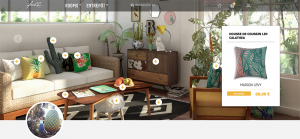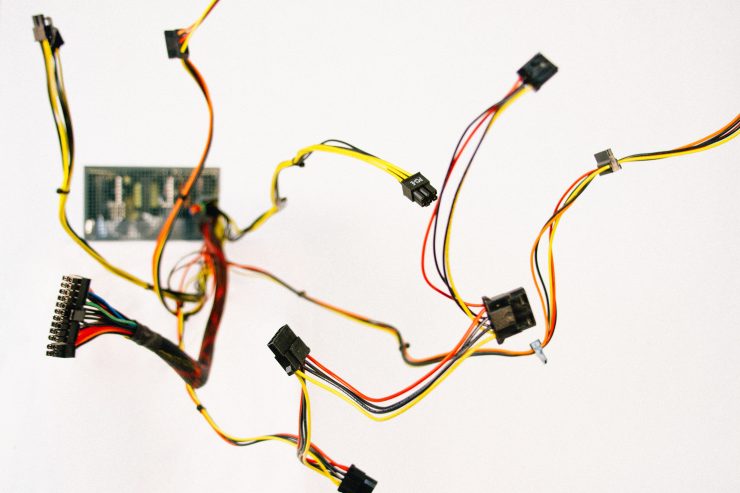It’s been several years now that technology is part of the world of fashion. With the advent of e-commerce, the impact of technology in fashion is undeniable. It is revolutionizing the way companies operate with data, artificial intelligence, and virtual reality. As this sector is growing, retailers must adapt to the new challenges imposed by technology and force all industries to adapt if they want to survive.
Which technology has the biggest impact in the fashion industry?
Artificial Intelligence (IA)
Artificial intelligence is replacing human interaction in many B2C experiences, how will the luxury industry adapt to new modes of service?
IBM estimates that by 2020, no less than 85% of B2C interactions will be managed through artificial intelligence. For brands whose priorities are the sense of detail and surpassing the expectations of their customers, artificial intelligence offers a tremendous opportunity for the establishment of better customer experience.
Big data is the buzzword that sweeps through most industries in the business world – and the fashion industry is no stranger to that. In fact, retailers have begun to take the digitization train and use these machines to their advantage.
Social media dominates the Web and provides customers with the platform to fix and shape trends. But most customers do not realize that they also provide brands with a wealth of information that can be used to predict trends and significantly reduce the gap between what is produced and sold. Thus, rather than collecting data manually, retailers use AI to collect, organize, analyze, and sort data into relevant categories, which can then be used to predict, understand, and respond to what their customers are looking for.
Screenshop, an application created by Kim Kardashian that uses image recognition by artificial intelligence. Using an algorithm and AI, the app “scans” the photo and tries to identify the pieces in the photo. Jeans, dresses, sweaters, hats, bags. This app helps users find affordable prices to create a better wardrobe and therefore better customer experience.
Internet of things (IoT)?
The Internet of Things will be a market that will be multiplied by 6 in 2020. By 2020, the Gartner Institute plans more than 50 billion connected objects on the market, and revolutionize the way users consume.
The IoT or “Internet of Things” announces a future made of ubiquity and digital, especially for retail. The introduction of IoT is one of the biggest opportunities for retail. This technology mechanizes the world by allowing the user to interact with everyday objects via the Internet. The Internet of Things comes as the logical and inevitable evolution of tomorrow’s world, this technological revolution is defined as the use of a connected everyday object, which captures data and transmits them to a third-party application (software, platform …) for analysis. In return, an extra service that improves the use of the product.
A radical change has taken place in fashion, with 70% of decision-makers around the world ready to adopt IoT to improve the customer experience, according to a recent report from the “Retail Vision“. The IoT in retail will enable customers to meet all their needs while sending the brand a flood of valuable data to improve the offer, it is also the integration of new innovative functions of traceability and interactivity.
They also collect valuable information about customers. Thanks to their sensors and the artificial intelligence they enjoy, thousands of data are available to brands so they can customize more offers and improve them. Behaviors and buying preferences no longer have any secrets.
Smartphones
Nowadays, access to the internet is available anywhere, anytime thanks to one little thing: the smartphone.
With mobile apps, it’s clear that mobile has not only had an impact on our daily lives but has become a fixture in the business world.
This era of digital has introduced a more elegant form of shopping via mobile commerce. Smartphones make it possible to make purchases online but also to have a better experience of payment, facilitated by the use of these applications via Apple or Android Pay. Most of the millennials prefer to shop online instead of going to a physical store, according to the BigCommerce website. Indeed, these applications make it easy to shop just with one click, take for example the purchase on Instagram. Customers can now enjoy a fast experience by clicking directly on the desired product redirecting it to the e-commerce site.
Virtual / Augmented Reality (VR)
The mobile and e-commerce apps led the first wave of transformations for the fashion industry. Now we can anticipate the next opportunities for retail, especially with virtual reality. Customers can easily browse different articles in one click.
New platforms for virtual reality have emerged. Apps such as DressingRoom allowing customers to try out avatar outfits or The Full Room, a startup incubated at Look Forward, and offering interior design and 3D store to discover products in 3D before buying an article. These platforms help improve the online shopping experience as avatars and virtual platforms interact and retain customers for longer. Now, they can physically see the product on themselves or in the space provided before buying them.

What Look Forward think
Overall, digital has completely evolved in the fashion industry. With the introduction of new technologies such as AI, IoT, VR, mobile customers can expect to receive a more personalized experience that meets all their needs and concerns. The digital transformation is leading to unimaginable changes, and we can only expect this change to progress quickly. It is time for retailers to embrace the new fashion landscape or be left behind.
